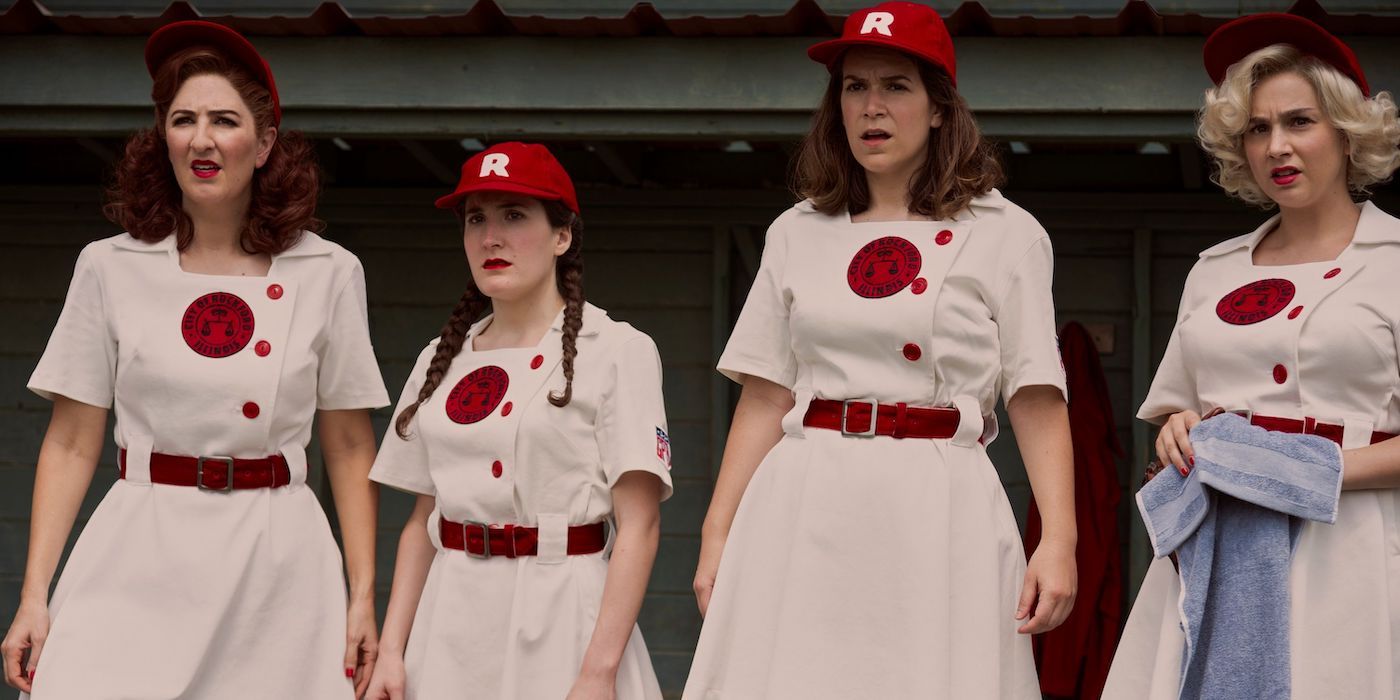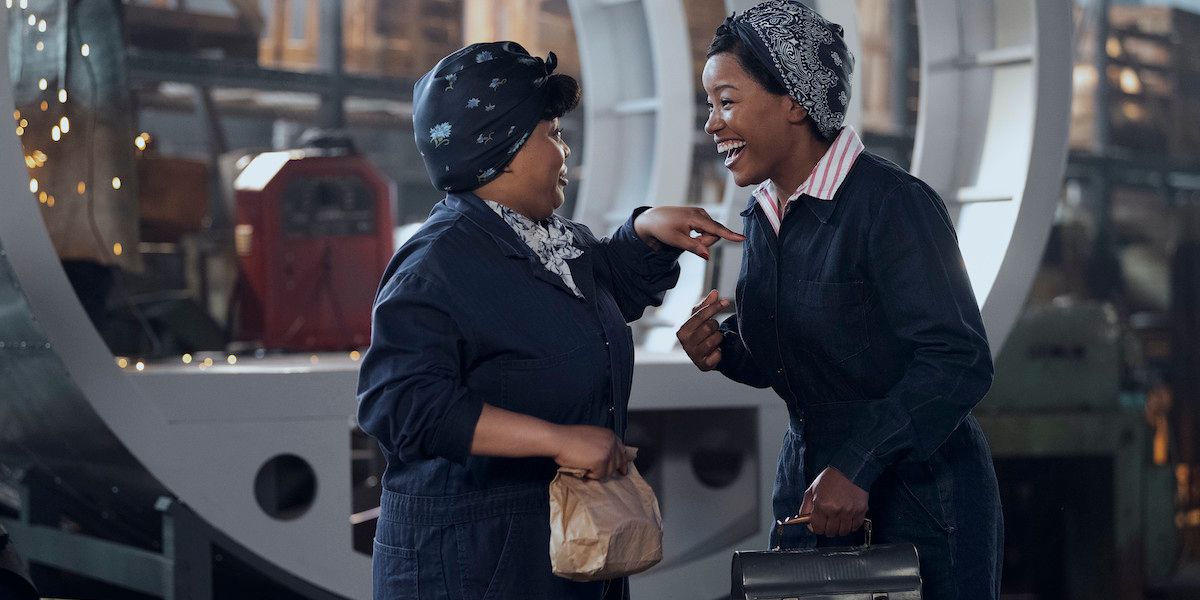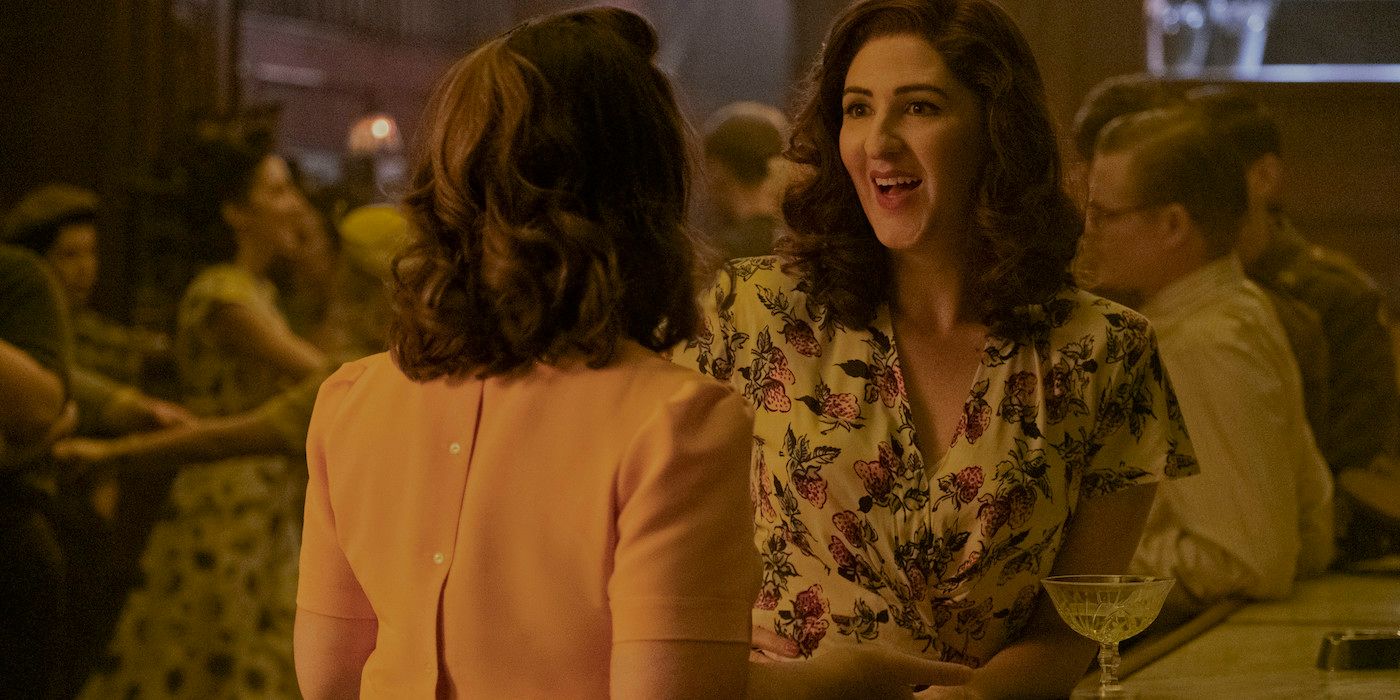Queer stories in media aren’t new. While their track record of positive portrayals hasn't always been the best, television and film have taken immense strides to create representation that isn’t just there to fill a quota — but, more often than not, those stories are filled with sadness, triggers and hurt. They are stories that might need to be told from time to time, but being the norm isn’t something that should happen at all times, especially when it comes to content that takes place in a time before ours. Sometimes, a series brings all those expectations put on queer representation and squashes them. Prime Video’s adaptation of A League of Their Own is an excellent encapsulation of that idea.
Co-created by Will Graham and Abbi Jacobson (Broad City) – who also stars in the series – A League of Their Own follows the formation of the Rockford Peaches, a team in the new All-American Girls Professional Baseball League. With the focus largely revolving around Carson Shaw (Jacobson), a married woman who runs away to pursue her dream, and Maxine Chapman (Roxanne Roxanne’s Chanté Adams), a Black woman obsessed with baseball who just wants a shot to play the game she loves, A League of Their Own does something that Penny Marshall’s 1992 film wasn't able to: it makes queer women and women of color the center of its DNA.
The Show Takes the Approach of Centering Different Characters
The original film centered a lot of its story around straight white women, but the series instead takes the approach of telling the stories of the women who had to hide or simply could not be part of the league because of the color of their skin. It’s an approach that allows the show to be completely separated from the film, outside of a few key references and Easter eggs, but it is also an idea that separates it from most series or movies.
Programs that center around queer representation and are also period pieces more often make it about the terrifying aspects of queerness. In setting stories in a time when it was illegal to be open about your sexuality or gender, these shows elect to show how difficult it was and do so by showing the worst side. Happiness is not usually an option, and queer audiences must watch characters like them repeatedly suffer on-screen. But A League of Their Own isn’t interested in this point of view. Instead, it chooses to focus on the positive instead of the negative, tackling queer representation by not completely the difficulties that marginalized communities faced during that time.
A League of Their Own takes the approach of happiness first. From Max and Carson's self-discovery to Bert's (Lea Robinson) gender identity, there is something at every corner of the show. The Rockford Peaches are filled with many queer characters who all come with different baggage and ideas. This show is filled with queer representation and doesn’t try to fit everything in one box, exploring multiple facets and not making one story fit all.
Episode 6 Perfectly Encompasses the Show's Treatment of Queerness
Episode 6, "Stealing Home," is a perfect distillation of everything the show has established previously with its acknowledgment and treatment of queerness, showcasing the best of the season while also showing the reality of the time. It has a fairly straightforward premise, with the Peaches having Lady Luck on their side and well on their way to making the Championship game. While Max gets closer to her uncle Bert, Carson becomes suspicious of Lupe (Roberta Colindrez) trying to leave the team. On the surface, this episode looks no different from the rest, but it is an incredible portrayal of community and the spaces that existed back then for queer people who had to hide their true selves to survive. It’s also the first time that Carson and Max seek out their community, whether they stumble upon it by accident or not; this is the moment that the show finally welcomes them into the world they have been heading toward the whole season. Max finds her people at a house party thrown by Bert and his partner, while Carson follows Lupe to a gay bar owned by Vi, played by Rosie O’Donnell, who was in the original film. Throughout the episode, Max and Carson become more comfortable with themselves. Max starts to understand who she is and how she wants to express that part of her through what she wears, while Carson becomes more confident in her relationship with Greta (D’Arcy Carden) and convinces her to come with her to the bar.
A League of Their Own showcases queerness so positively that the sequence of Max and Esther (Andia Winslow), intercut with Joe (Melanie Field), Greta and Carson at the bar, feels so good that the gut punch delivered by the end serves as a total surprise, even if it was so predictable. It's what makes the arrival of the police at the bar, the chaos that ensues inside, and the aftermath so challenging to watch. Until that point, the show has never demonstrated this kind of trauma. It's been discussed, and multiple characters had overstressed the importance of caution, but it also serves as the first time that the show pulls the rug from under the feet of the audience and reminds them of the time period in which this story takes place.
Even with all of that, amongst the chaos of it all, stands Max — who, on her side of things, gets the happiness, gets the girl. That is the main difference from many other shows, which sets it apart.
A League of Their Own isn’t interested in queer trauma and exploiting it for stories. Even when they do make use of more intense narratives to emphasize the truth of the time, they contrast it with a note of positivity. Queerness is too often synonymous with trauma when put on television, and the show has no interest in that. Instead, it chooses to showcase the good side, even when the ugly one shows its face.
A League of Their Own is now available to stream on Prime Video.



